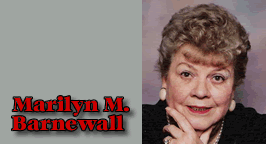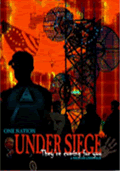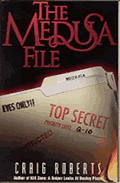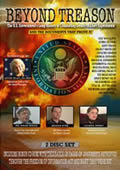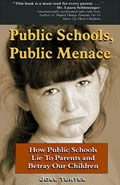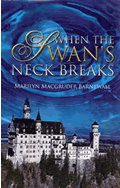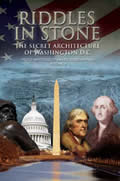By
Marilyn M. Barnewall
June 10, 2009
NewsWithViews.com
Many have heard of Congressman Ron Paul’s proposed Bill requiring an audit of the Federal Reserve. It is finally getting some traction.
Congressman Paul’s Bill (HR 1207) was submitted to Committee on 26 February 2009. HR 1207 is short – even the reading-challenged Members of the House should have no problem knowing what this legislation contains:
A BILL
To amend title 31, United States Code, to reform the manner in which the Board of Governors of the Federal Reserve System is audited by the Comptroller General of the United States and the manner in which such audits are reported, and for other purposes.
Be it enacted by the Senate and House of Representatives of the United States of America in Congress assembled,
SECTION 1. SHORT TITLE.
This Act may be cited as the `Federal Reserve Transparency Act of 2009'.
SEC. 2. AUDIT REFORM AND TRANSPARENCY FOR THE BOARD OF GOVERNORS OF THE FEDERAL RESERVE SYSTEM.
(a) In General- Subsection (b) of section 714 of title 31, United States Code, is amended by striking all after `shall audit an agency' and inserting a period.
(b) Audit- Section 714 of title 31, United States Code, is amended by adding at the end the following new subsection:
(e) Audit and Report of the Federal Reserve System-
`(1) IN GENERAL- The audit of the Board of Governors of the Federal Reserve System and the Federal reserve banks under subsection (b) shall be completed before the end of 2010.
`(2) REPORT-
`(A) REQUIRED- A report on the audit referred to in paragraph (1) shall be submitted by the Comptroller General to the Congress before the end of the 90-day period beginning on the date on which such audit is completed and made available to the Speaker of the House, the majority and minority leaders of the House of Representatives, the majority and minority leaders of the Senate, the Chairman and Ranking Member of the committee and each subcommittee of jurisdiction in the House of Representatives and the Senate, and any other Member of Congress who requests it.
`(B) CONTENTS- The report under subparagraph (A) shall include a detailed description of the findings and conclusion of the Comptroller General with respect to the audit that is the subject of the report, together with such recommendations for legislative or administrative action as the Comptroller General may determine to be appropriate.'.
HR 1207 has been submitted to House Committee on Financial Services chaired by Congressman Barney Frank. It has 179 House (not Committee) supporters. Part Two of this article lists the legislators who support HR 1207, lists the members of the Committee, and gives readers the White House switchboard number. Now is the time to call and politely insist that this legislation make it out of Committee and be brought to the floor of the House for a vote. We, the people, deserve to know which legislators support the ongoing secrecy of the Federal Reserve. Such people need to be voted out of office because they support the lack of transparency that has caused the current financial ills of America.
Most Americans believe the Federal Reserve is part of the federal government. It is not.
If you ask who creates our money, most answer “the government” or “the treasury.” Neither is true. Today that responsibility falls to Ben Bernanke, Chairman of the Board of Governors of the Federal Reserve System.
America’s founding fathers were very specific about the creation of money. Article I, Section 8 of our Constitution charges the Congress with “the power to coin money and regulate the value thereof.” Many argue it violates the Constitution to turn these powers over to a non-governmental, privately-owned, highly-profitable, outside third party like the Federal Reserve – structured very much like any world cartel – OPEC is a good example. Though it is defined by some as “a government entity with private components,” its structure and lack of transparency make it appear more like OPEC than any government agency.
The Federal Reserve is a cartel of bankers and investment bankers who coordinate the production, pricing and marketing of money in the United States. This particular cartel also utilizes the police power of the federal government to enforce its agreements.
Thomas Jefferson once said that a private central bank (like the Federal Reserve) which issues the public currency was “a greater menace to the liberties of the people than a standing army.”
Member banks own the Federal Reserve System. Private investors own member banks.
The birth of the Federal Reserve began one windy November night in 1910 at a New Jersey train depot. Rhode Island Senator Nelson Aldrich, the political spokesman at the time for big business interests, hosted a “hunting” party. His private railway car was hooked to a train that, after a few transfers to other trains, would get people close to Jekyll Island. They were then transported by yacht to the island.
Senator Aldrich’s party consisted of:
1- Abraham Piatt Andrew, Assistant Secretary of the United States Treasury
2- Frank A. Vanderlip, president of National City Bank of New York (now Citibank, then representing William Rockefeller and Kuhn, Loeb & Co, international investment bankers)
3- Henry P. Davison of J.P. Morgan Company
4- Charles D. Norton, president of J.P. Morgan’s Bankers Trust Company
5- Paul M. Warburg, a partner in Kuhn, Loeb & Company, was also part of the group. Warburg represented the Rothschild banking dynasty in England and France. Mr. Warburg was the brother of Max Warburg who headed a banking consortium in Germany and the Netherlands.
The Rothschild-controlled banking system of Europe wanted America to have a central bank and we got one.
The Jekyll Island plan was pretty simple. They wanted a central bank that allowed them to control the money supply in the U.S. An entity had to be created that looked like a duck, walked like a duck, but was not called a duck -- or, a central bank. Further, the entity had to look like it was controlled by Congress even though it wasn’t.
Is this significant? Does it matter? In 1913, $1,000 could buy what it took $10,000 to buy in 1994.
For that, you can thank the Federal Reserve!
The Federal Reserve has three primary components.
The Board of Governors determines the system’s monetary policy. The Board consists of seven members, appointed by the President and confirmed by the Senate. Each term is for 14-years and each is staggered so no single President can dominate Federal Reserve policy. A case can, however, be made that because of George H.W. Bush’s presidency from 1988-1992, and George W. Bush’s presidency from 2000-2008, the Bush family had an inordinate amount of influence in the current structure of the Federal Reserve.
Regional Reserve Banks hold cash reserves of the system, supply currency to member banks, clear checks, and act as fiscal agents for the government. Member banks elect directors of the regional Reserve Banks. Larger banks -- Bank of America, Citibank and Chase Manhattan, for example -- hold more shares than smaller banks (you don’t suppose that’s why they are “too big to fail,” do you?). However, they have only one vote in the selection of Regional Reserve Bank directors.
The Federal Open-Market Committee implements monetary policy set by the national Board. It controls most of its own policy. It manipulates our money supply and interest rates by purchasing or selling government securities. It may do this via the purchase or sale of foreign currencies and securities of other governments. Money is created and interest rates go down when the Fed purchases. When the Fed sells government securities, the money supply is reduced and interest rates go up.
The Committee is made up of the national Board of Governors plus five of the twelve regional Presidents. Twenty-four bond dealers handle all sales of government securities – and they collect dealer’s commissions on each transaction.
Fed monetary policy decisions are made at secret meetings. We, the public, get a brief report a few weeks after decisions are made. Transcripts of deliberations are destroyed ... a policy which began when, in 1970, the Freedom of Information Act was passed. Theoretically, the CIA cannot get away with the kind of secrecy this non-government Board can!
The federal government does not own any stock in the Federal Reserve System. The Fed is privately owned. In essence, owning stock in the Federal Reserve doesn’t imply ownership. It just shows how much operating capital each bank has in the system.
The U.S., except for a brief period of time, operated without a central bank from the time the nation was founded under the Constitution in 1789, until 1913. Unless my math is off, that’s 124 years. We have operated under a central bank (Federal Reserve) for only 78 years.
The Congress could abolish the Federal Reserve System by a single majority vote. If the vote is vetoed by the Executive Branch, a two-thirds majority vote is required to override the veto. If the System is abolished, all bank-clearing functions can easily be transferred to the Treasury. The power to “coin money and regulate the value thereof” would once again fall under the oversight of the Congress, where our Constitution says it should be.
|
Subscribe to the NewsWithViews Daily News Alerts! |
Since no agency, government or otherwise, has more impact on our financial lives than the Federal Reserve, it is a topic with which all Americans should be familiar. Very few are.
Next week part two.
� 2009 Marilyn M. Barnewall - All Rights Reserved
Sign Up For Free E-Mail Alerts
Marilyn Barnewall received her graduate degree in Banking from the University of Colorado Graduate School of Business in 1978. She created the first wealth creation (credit-driven) private bank in America in the 1970s. Prior to her 21-year banking career, she was a newspaper reporter, advertising copywriter, public relations director, magazine editor, assistant to the publisher, singer, dog trainer, and an insurance salesperson and manager.
She was named one of America's top 100 businesswomen in the book, What It Takes (Dolphin/Doubleday; Gardenswartz and Roe) and was one of the founders of the Committee of 200, the official organization of America's top 200 businesswomen. She can be found in Who's Who in America (2005-08), Who's Who of American Women (2006-08), Who's Who in Finance and Business (2006-08), and Who's Who in the World (2008).
Web site:
E-Mail: marilynmacg@juno.com

